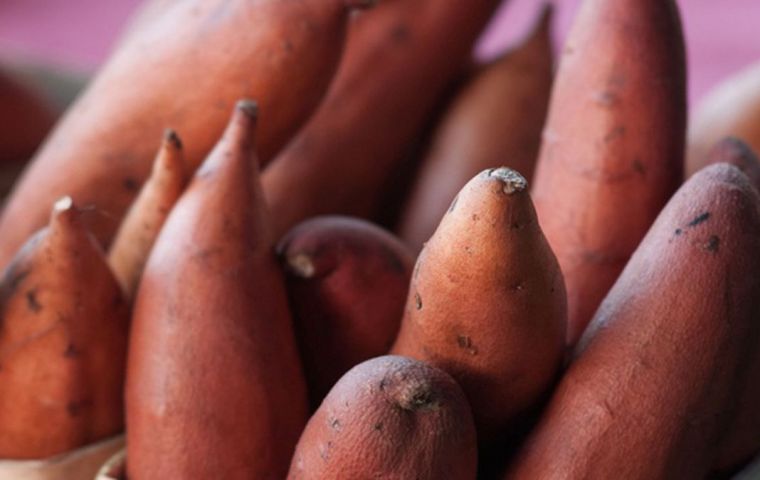MercoPress. South Atlantic News Agency
Polynesian sweet potato mystery solved: epic transoceanic journey to South America
 The question, long hypothesized in part is based on enduring presence in Polynesia of a staple food in the form of the sweet potato that originated in South America
The question, long hypothesized in part is based on enduring presence in Polynesia of a staple food in the form of the sweet potato that originated in South America New genetic research shows that there was mingling between ancient native peoples from Polynesia and South America, revealing a single episode of interbreeding roughly 800 years ago after an epic transoceanic journey.
The question of such contact - long hypothesized in part based on the enduring presence in Polynesia of a staple food in the form of the sweet potato that originated in South and Central America - had been keenly debated among scientists.
Scientists said on Wednesday an examination of DNA from 807 people - from 14 Polynesian islands and Pacific coastal Native American populations from Mexico to Chile - definitively resolved the matter.
People from four island sites in French Polynesia - Mangareva and the Pallisers in the Tuamotu archipelago and Fatu Hiva and Nuku Hiva in the Marquesas Islands - bore DNA indicative of interbreeding with South Americans most closely related to present-day indigenous Colombians at around 1200 AD.
These islands are roughly 6,800 km from South America.
People from Chile's Rapa Nui, or Easter Island, also had South American ancestry, some from modern Chilean immigrants and some from the same ancient intermingling as the other islands. Rapa Nui, located 3,700 km west of South America and known for its massive stone figures called moai, was settled some time after the interbreeding 800 years ago.
The study left open the question of who made the monumental Pacific crossing: Polynesians heading east and arriving in Colombia or perhaps Ecuador, or South Americans traveling west.
“I favor the Polynesian theory, since we know that the Polynesians were intentionally exploring the ocean and discovering some of the most distant Pacific islands around exactly the time of contact,” said Stanford University computational geneticist Alexander Ioannidis, lead author of the research published in the journal Nature.
“If the Polynesians reached the Americas, their voyage would likely have been conducted in their double-hulled sailing canoes, which sail using the same principle as a modern catamaran: swift and stable,” Ioannidis added.
This contact explains the mystery of how the sweet potato arrived in Polynesia centuries before European sailors. Ioannidis noted that the sweet potato's name in many Polynesian languages - kumara - resembles its name in some native Andes languages.




Top Comments
Disclaimer & comment rulesCommenting for this story is now closed.
If you have a Facebook account, become a fan and comment on our Facebook Page!